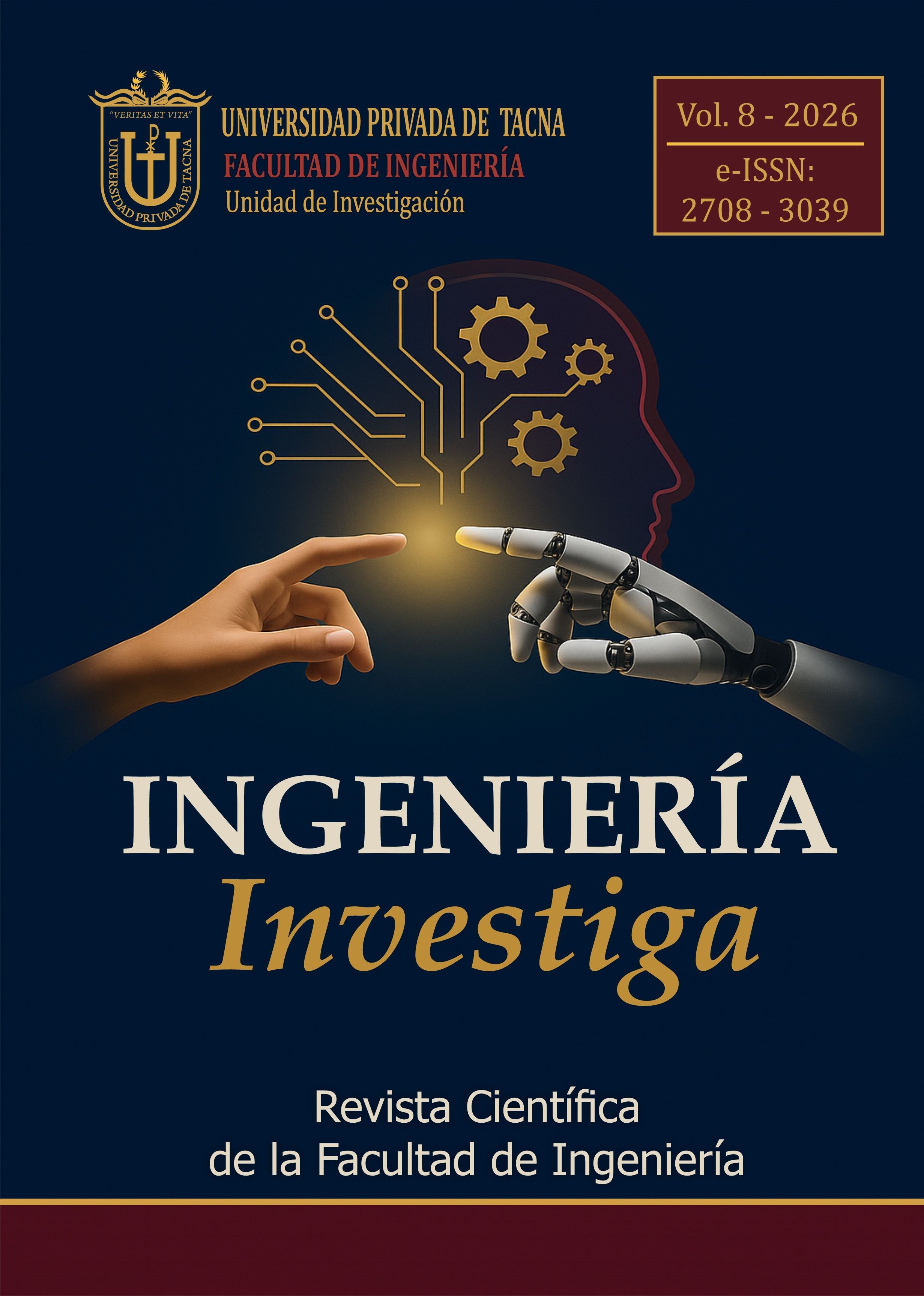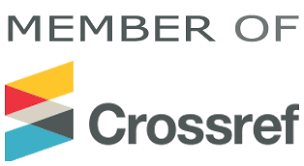Andean Grains and Their Strategic Role in Sustainable Food Systems
DOI:
https://doi.org/10.47796/ing.v8i00.1333Keywords:
andean grains, collaboration networks, sustainable food systemsAbstract
Andean grains (AG), recognized for their nutritional value and adaptability, have regained relevance as strategic crops in response to current sustainability and food security challenges. This study aimed to map the evolution, impact and trends of the scientific production focused on these crops. A scoping review based on Scopus was carried out, complemented by a bibliometric analysis using VOSviewer and Bibliometrix. The results show an increase in publications since 2012, reaching a peak in 2024 with 283 documents. Quinoa gathers the largest share of scientific output, followed by amaranth, while cañihua and tarwi receive less attention. China, India and the United States lead in publication volume and citations. In contrast, Peru, despite being a center of origin, shows a lower average impact per article. The main thematic areas include nutrition, functional foods and food security. Food Chemistry and Foods stand out as the most influential journals. Although academic interest in AG continues to grow, challenges remain related to commercialization, equitable distribution of benefits and the protection of ancestral knowledge, along with the need to strengthen interdisciplinary research across the entire value chain.
Downloads
References
Afzal, I., Haq, M. Z. U., Ahmed, S., Hirich, A., y Bazile, D. (2023). Challenges and perspectives for integrating quinoa into the agri-food system. Plants, 12(19). https://doi.org/10.3390/plants12193361
Aguilar, R. S. (2023). Lupinus mutabilis sweet: una revisión de sus propiedades nutricionales y tecno funcionales, y su aplicación en la elaboración de productos horneados [Trabajo de fin de máster, Universidad de Valladolid]. https://uvadoc.uva.es/handle/10324/63502
Ahmadzai, H. (2020). Trends in quinoa adoption in marginal areas, economic viability, and policy outlook. Journal of Agribusiness and Rural Development, 57(3). https://doi.org/10.17306/j.jard.2020.01351
Ahumada, A., Ortega, A., Chito, D., y Benítez, R. (2016). Saponinas de quinua (Chenopodium quinoa Willd.): un subproducto con alto potencial biológico. Revista Colombiana de Ciencias Químico Farmacéuticas, 45(3), 438–469. https://doi.org/10.15446/rcciquifa.v45n3.62043
Alandia, G., Rodriguez, J. P., Jacobsen, S.-E., Bazile, D., y Condori, B. (2020). Global expansion of quinoa and challenges for the Andean region. Global Food Security, 26(100429), 100429. https://doi.org/10.1016/j.gfs.2020.100429
Amit, S., Irfan, A. M., Gaurav, S., Nalini, T., y Sarmad, M. (2021). A review on medicinal and pharmaceutical importance of quinoa (Chenopodium quinoa). Research Journal of Pharmacy and Technology, 14(3), 1779–1784. https://doi.org/10.5958/0974-360x.2021.00316.4
Anaya, R. B., De La Cruz, E., Muñoz-Centeno, L. M., Cóndor, R., León, R., y Carhuaz, R. (2022). Food and medicinal uses of ancestral Andean grains in the districts of Quinua and Acos Vinchos (Ayacucho-Peru). Agronomy (Basel, Switzerland), 12(5), 1014. https://doi.org/10.3390/agronomy12051014
Andrango, G., Johnson, A., y Bellemare, M. F. (2020). "Quinoa Production and Growth Potential in Bolivia, Ecuador, and Peru" Choices. Quarter 4. https://goo.su/XgEH8IK
Angeli, V., Miguel Silva, P., Crispim Massuela, D., Khan, M. W., Hamar, A., Khajehei, F., Graeff-Hönninger, S., y Piatti, C. (2020). Quinoa (Chenopodium quinoa Willd.): An overview of the potentials of the “golden grain” and Socio-economic and environmental aspects of its cultivation and marketization. Foods (Basel, Switzerland), 9(2), 216. https://doi.org/10.3390/foods9020216
Baraniak, J., y Kania-Dobrowolska, M. (2022). The dual nature of amaranth-functional food and potential medicine. Foods (Basel, Switzerland), 11(4), 618. https://doi.org/10.3390/foods11040618
Bazile, D., Pulvento, C., Verniau, A., Al-Nusairi, M. S., Ba, D., Breidy, J., Hassan, L., Mohammed, M. I., Mambetov, O., Otambekova, M., Sepahvand, N. A., Shams, A., Souici, D., Miri, K., & Padulosi, S. (2016). Worldwide evaluations of quinoa: Preliminary results from post International Year of quinoa FAO projects in nine countries. Frontiers in Plant Science, 7, 850. https://doi.org/10.3389/fpls.2016.00850
Boukid, F., y Pasqualone, A. (2022). Lupine (Lupinus spp.) proteins: characteristics, safety and food applications. European Food Research and Technology, 248(2), 345–356. https://doi.org/10.1007/s00217-021-03909-5
Calizaya, F., Gómez, L., Zegarra, J., Pozo, M., Mindani, C., Caira, C., y Calizaya, E. (2023). Unveiling ancestral sustainability: A comprehensive study of economic, environmental, and social factors in potato and quinoa cultivation in the highland aynokas of Puno, Peru. Sustainability, 15(17), 13163. https://doi.org/10.3390/su151713163
Campos-Rodriguez, J., Acosta-Coral, K., y Paucar-Menacho, L. M. (2022). Quinoa (Chenopodium quinoa): Nutritional composition and bioactive compounds of grain and leaf, and impact of heat treatment and germination. Scientia agropecuaria, 13(3), 209–220. https://doi.org/10.17268/sci.agropecu.2022.019
Carvajal-Larenas, F. E., Linnemann, A. R., Nout, M. J. R., Koziol, M., y van Boekel, M. A. J. S. (2016). Lupinus mutabilis: Composition, Uses, Toxicology, and Debittering. Critical Reviews in Food Science and Nutrition, 56(9), 1454–1487. https://doi.org/10.1080/10408398.2013.772089
Chevarria-Lazo, M., Bazile, D., Dessauw, D., Louafi, S., Trommetter, M., y Hocde, H. (2015). Quinoa and the exchange of genetic resources: improving the regulation systems. Capítulo 1.6. En FAO y CIRAD. (Eds.). State of the art report of quinoa in the world in 2013 (pp. 83-105). https://goo.su/ihwmo
Coțovanu, I., Stroe, S.-G., Ursachi, F., y Mironeasa, S. (2022). Addition of amaranth flour of different particle sizes at established doses in wheat flour to achieve a nutritional improved wheat bread. Foods (Basel, Switzerland), 12(1), 133. https://doi.org/10.3390/foods12010133
Dehghanian, Z., Ahmadabadi, M., Asgari Lajayer, B., Gougerdchi, V., Hamedpour-Darabi, M., Bagheri, N., Sharma, R., Vetukuri, R. R., Astatkie, T., y Dell, B. (2024). Quinoa: A promising crop for resolving the bottleneck of cultivation in soils affected by multiple environmental abiotic stresses. Plants, 13(15), 2117. https://doi.org/10.3390/plants13152117
Ebert, A. (2014). Potential of underutilized traditional vegetables and legume crops to contribute to food and nutritional security, income and more sustainable production systems. Sustainability, 6(1), 319–335. https://doi.org/10.3390/su6010319
Elsohaimy, S. A., Refaay, T. M., y Zaytoun, M. A. M. (2015). Physicochemical and functional properties of quinoa protein isolate. Annals of Agricultural Science, 60(2), 297–305. https://doi.org/10.1016/j.aoas.2015.10.007
Food and Agriculture Organization of the United Nations [FAO]. (2003). Food energy - methods of analysis and conversion factors. https://www.fao.org/4/y5022e/y5022e00.htm#Contents
Food and Agriculture Organization of the United Nations [FAO]. (2011). Quinoa: An ancient crop to contribute to world food security. https://www.fao.org/4/aq287e/aq287e.pdf
Food and Agriculture Organization of the United Nations [FAO]. (2013). The International Year of Quinoa. https://goo.su/75Go3i
Food and Agriculture Organization of the United Nations [FAO]. (2018). Sustainable food systems Concept and framework. https://goo.su/HBBi
Food and Agriculture Organization of the United Nations [FAO]. (2022). Dynamically conserved Indigenous Peoples’ agricultural knowledge of resilience and adaptation for over 5 000 years. https://goo.su/DU2iNW0
Garvin Suero, A., Goldstein, P. S., d’Alpoim Guedes, J., y Sitek, M. J. (2024). Homeland food traditions in the Tiwanaku colonies: Quinoa and Amaranthaceae cultivation in the middle horizon (AD 600–1100) Locumba Valley, Peru. Latin American Antiquity, 35(4), 927–945. https://doi.org/10.1017/laq.2023.46
Graf, B. L., Rojas-Silva, P., Rojo, L. E., Delatorre-Herrera, J., Baldeón, M. E., y Raskin, I. (2015). Innovations in health value and functional food development of quinoa (Chenopodium quinoa Willd.): Quinoa health value and functional foods…. Comprehensive Reviews in Food Science and Food Safety, 14(4), 431–445. https://doi.org/10.1111/1541-4337.12135
Gross, R., Koch, F., Malaga, I., de Miranda, A. F., Schoeneberger, H., y Trugo, L. C. (1989). Chemical composition and protein quality of some local Andean food sources. Food Chemistry, 34(1), 25–34. https://doi.org/10.1016/0308-8146(89)90030-7
Hiywotu, A. M. (2025). Advancing sustainable agriculture for goal 2: zero hunger - a comprehensive overview of practices, policies, and technologies. Agroecology and Sustainable Food Systems, 1–29. https://doi.org/10.1080/21683565.2025.2451344
Jaikishun, S., Li, W., Yang, Z., y Song, S. (2019). Quinoa: In perspective of global challenges. Agronomy (Basel, Switzerland), 9(4), 176. https://doi.org/10.3390/agronomy9040176
Jan, N., Hussain, S. Z., Naseer, B., y Bhat, T. A. (2023). Amaranth and quinoa as potential nutraceuticals: A review of anti-nutritional factors, health benefits and their applications in food, medicinal and cosmetic sectors. Food Chemistry: X, 18(100687), 100687. https://doi.org/10.1016/j.fochx.2023.100687
Jarvis, D. E., Ho, Y. S., Lightfoot, D. J., Schmöckel, S. M., Li, B., Borm, T. J. A., Ohyanagi, H., Mineta, K., Michell, C. T., Saber, N., Kharbatia, N. M., Rupper, R. R., Sharp, A. R., Dally, N., Boughton, B. A., Woo, Y. H., Gao, G., Schijlen, E. G. W. M., Guo, X., … Tester, M. (2017). The genome of Chenopodium quinoa. Nature, 542(7641), 307–312. https://doi.org/10.1038/nature21370
Karovičová, J., Kohajdová, Z., Lauková, M., Minarovičová, L., Greifová, M., Hojerová, J., y Greif, G. (2020). Utilisation of Quinoa for development of fermented beverages. Potravinarstvo, 14, 465–472. https://doi.org/10.5219/1323
Lacatusu, I., Arsenie, L. V., Badea, G., Popa, O., Oprea, O., y Badea, N. (2018). New cosmetic formulations with broad photoprotective and antioxidative activities designed by amaranth and pumpkin seed oils nanocarriers. Industrial Crops and Products, 123, 424–433. https://doi.org/10.1016/j.indcrop.2018.06.083
Ludena Urquizo, F. E., García Torres, S. M., Tolonen, T., Jaakkola, M., Pena-Niebuhr, M. G., von Wright, A., Repo-Carrasco-Valencia, R., Korhonen, H., y Plumed-Ferrer, C. (2017). Development of a fermented quinoa-based beverage. Food Science & Nutrition, 5(3), 602–608. https://doi.org/10.1002/fsn3.436
Marak, N. R., Das, P., Das Purkayastha, M., y Baruah, L. D. (2024). Effect of quinoa (Chenopodium quinoa W.) flour supplementation in breads on the lipid profile and glycemic index: an in vivo study. Frontiers in Nutrition, 11, 1341539. https://doi.org/10.3389/fnut.2024.1341539
Martinez-Lopez, A., Millan-Linares, M. C., Rodriguez-Martin, N. M., Millan, F., y Montserrat-de la Paz, S. (2020). Nutraceutical value of kiwicha (Amaranthus caudatus L.). Journal of Functional Foods, 65(103735), 103735. https://doi.org/10.1016/j.jff.2019.103735
Ministerio de Desarrollo Agrario y Riego – MIDAGRI (2023, 30 de junio). Los granos andinos son superalimentos por su calidad nutritiva y Perú es líder mundial en quinua. https://goo.su/SKmxcvz
Moscoso-Mujica, G., Mujica, Á., Chura, E., Begazo, N., Jayo-Silva, K., y Oliva, M. (2024). Kañihua (Chenopodium pallidicaule Aellen), an ancestral Inca seed and optimal functional food and nutraceutical for the industry: Review. Heliyon, 10(14), e34589. https://doi.org/10.1016/j.heliyon.2024.e34589
Mukuwapasi, B., Mavengahama, S., y Gerrano, A. S. (2024). Grain amaranth: A versatile untapped climate-smart crop for enhancing food and nutritional security. Discover Agriculture, 2(1). https://doi.org/10.1007/s44279-024-00057-8
Ng, C. Y., y Wang, M. (2021). The functional ingredients of quinoa (Chenopodium quinoa) and physiological effects of consuming quinoa: A review. Food Frontiers, 2(3), 329–356. https://doi.org/10.1002/fft2.109
Olivera, L., Best, I., Paredes, P., Perez, N., Chong, L., y Marzano, A. (2022). Nutritional value, methods for extraction and bioactive compounds of quinoa. En Pseudocereals [Working Title]. IntechOpen.
Parra-Gallardo, G., Salas-Sanjuán, M. del C., del Moral, F., y Valenzuela, J. L. (2024). Characterising the nutritional and alkaloid profiles of tarwi (Lupinus mutabilis Sweet) pods and seeds at different stages of ripening. Agriculture, 14(10), 1812. https://doi.org/10.3390/agriculture14101812
Pascual-Chagman, G., Santa-Cruz-Olivos, J., Hidalgo, A., Benavente, F., Pérez-Camino, M. C., Sotelo-Mendez, A., Paucar-Menacho, L. M., y Encina-Zelada, C. R. (2021). Lupinus mutabilisoil obtained by expeller press: Yield, physicochemical characterization, antioxidant capacity, fatty acids and oxidative stability analyses. Scientia agropecuaria, 12(2), 219–227. https://doi.org/10.17268/sci.agropecu.2021.025
Ponce de León Saavedra, P., y Valdez-Arana, J. del C. (2021). Nutritional and functional evaluation of 17 quinoa (Chenopodium quinoaWilld) accessions cultivated in the Andean area of Peru. Scientia agropecuaria, 12(1), 15–23. https://doi.org/10.17268/sci.agropecu.2021.002
Ramos-Sandoval, R., y Mendiburu Díaz, C. (2024). Why do small farmers have less access to credit? A microdata analysis of the Peruvian case. Nativa, 12(2), 215–225. https://doi.org/10.31413/nat.v12i2.16758
Rastogi, A., y Shukla, S. (2013). Amaranth: a new millennium crop of nutraceutical values. Critical Reviews in Food Science and Nutrition, 53(2), 109–125. https://doi.org/10.1080/10408398.2010.517876
Repo-Carrasco, R., Espinoza, C., y Jacobsen, S.-E. (2003). Nutritional Value and Use of the Andean Crops Quinoa (Chenopodium quinoa) and Kañiwa (Chenopodium pallidicaule). Food reviews international, 19(1–2), 179–189. https://doi.org/10.1081/fri-120018884
Repo-Carrasco-Valencia, R. (2011). Andean indigenous food crops: nutritional value and bioactive compounds [Tesis doctoral, University of Turku]. https://www.utupub.fi/handle/10024/74762
Repo-Carrasco-Valencia, R. (2020). Nutritional value and bioactive compounds in Andean ancient grains. Proceedings (MPDI), 53(1), 1. https://doi.org/10.3390/proceedings2020053001
Repo-Carrasco-Valencia, R., Basilio-Atencio, J., Luna-Mercado, G. I., Pilco-Quesada, S., y Vidaurre-Ruiz, J. (2022). Andean ancient grains: Nutritional value and novel uses. Biology and Life Sciences Forum, 8(1), 15. https://doi.org/10.3390/blsf2021008015
Repo-Carrasco-Valencia, R., Hellström, J. K., Pihlava, J.-M., y Mattila, P. H. (2010). Flavonoids and other phenolic compounds in Andean indigenous grains: Quinoa (Chenopodium quinoa), kañiwa (Chenopodium pallidicaule) and kiwicha (Amaranthus caudatus). Food Chemistry, 120(1), 128–133. https://doi.org/10.1016/j.foodchem.2009.09.087
Rodríguez-Ortega, D., Zambrano, J. L., Pereira-Lorenzo, S., Torres, A., y Murillo, Á. (2023). Lupinus mutabilis breeding in the Andes of Ecuador, Peru, and Bolivia: A review. Agronomy (Basel, Switzerland), 14(1), 94. https://doi.org/10.3390/agronomy14010094
Sanchez, K. A. (2012). Observations Regarding Consumption Of Peruvian Native Grains (Quinoa, Amaranth And Kañiwa), Weight Status, And Perceptions Of Potential Risk Factors, Warning Signs And Symptoms Of Type 2 Diabetes Among Peruvian Adults: A Case Study [Tesis de maestría, University of Maryland]. https://goo.su/zzbLav
Sayed-Ahmad, B., Urrutigoïty, M., Hijazi, A., Saad, Z., Cerny, M., Evon, P., Talou, T., y Merah, O. (2022). Amaranth Oilseed composition and cosmetic applications. Separations, 9(7), 181. https://doi.org/10.3390/separations9070181
Simioniuc, D. P., Simioniuc, V., Topa, D., van den Berg, M., Prins, U., Bebeli, P. J., y Gabur, I. (2021). Assessment of Andean lupin (Lupinus mutabilis) Genotypes for Improved Frost Tolerance. Agriculture, 11(2), 155. https://doi.org/10.3390/agriculture11020155
Taco-Taype, N., y Zúñiga-Dávila, D. (2020). Efecto de la inoculación de plantas de Tarwi con cepas de Bradyrhizobium spp. aisladas de un lupino silvestre, en condiciones de invernadero. Revista peruana de biologia, 27(1), 035–042. https://doi.org/10.15381/rpb.v27i1.17577
Torres Vargas, O. L., Lema González, M., y Galeano Loaiza, Y. V. (2021). Optimization study of pasta extruded with quinoa flour (Chenopodium quinoa willd). CyTA - Journal of Food, 19(1), 220–227. https://doi.org/10.1080/19476337.2021.1883116
Villacrés, E., Quelal, M., Galarza, S., Iza, D., y Silva, E. (2022). Nutritional value and bioactive compounds of leaves and grains from quinoa (Chenopodium quinoa Willd.). Plants, 11(2), 213. https://doi.org/10.3390/plants11020213
Wolosik, K., Zareba, I., Surazynski, A., y Markowska, A. (2017). The possible pre- and post-UVA radiation protective effect of Amaranth Oil on human skin fibroblast cells. Pharmacognosy Magazine, 13(Suppl 2), S339–S343. https://doi.org/10.4103/pm.pm_522_15
Downloads
Published
How to Cite
Issue
Section
License
Copyright (c) 2025 Maddy Bertha Cunurana Cruz

This work is licensed under a Creative Commons Attribution 4.0 International License.








